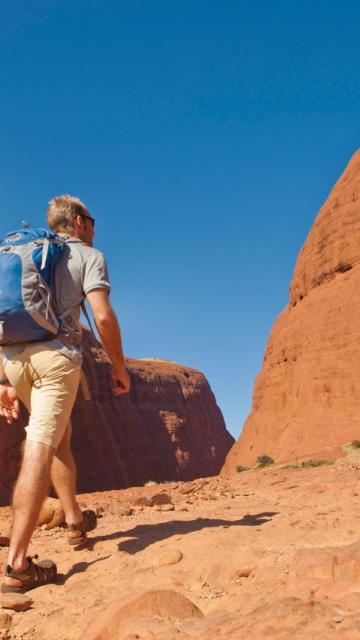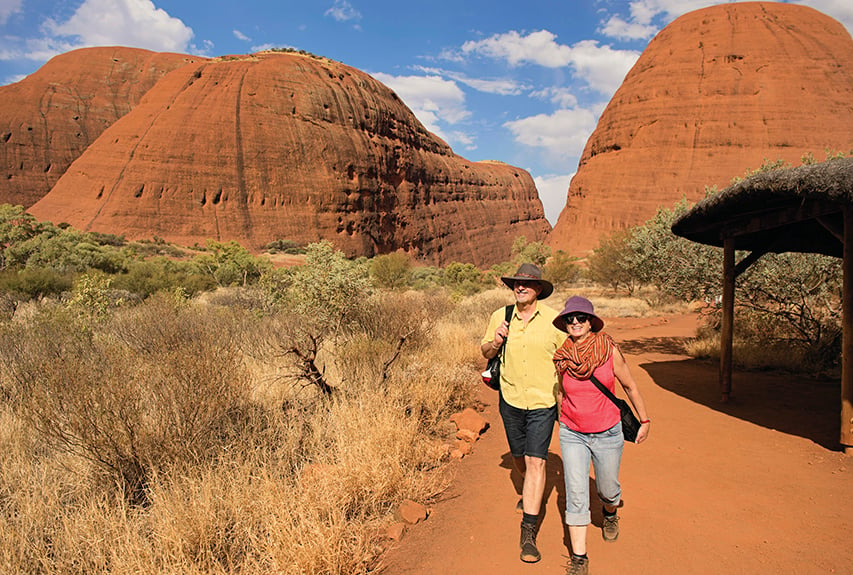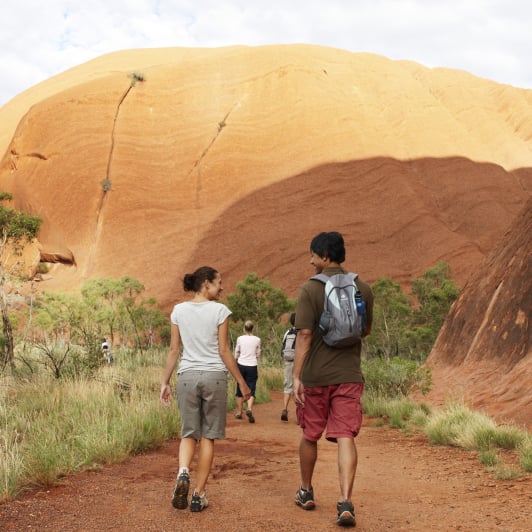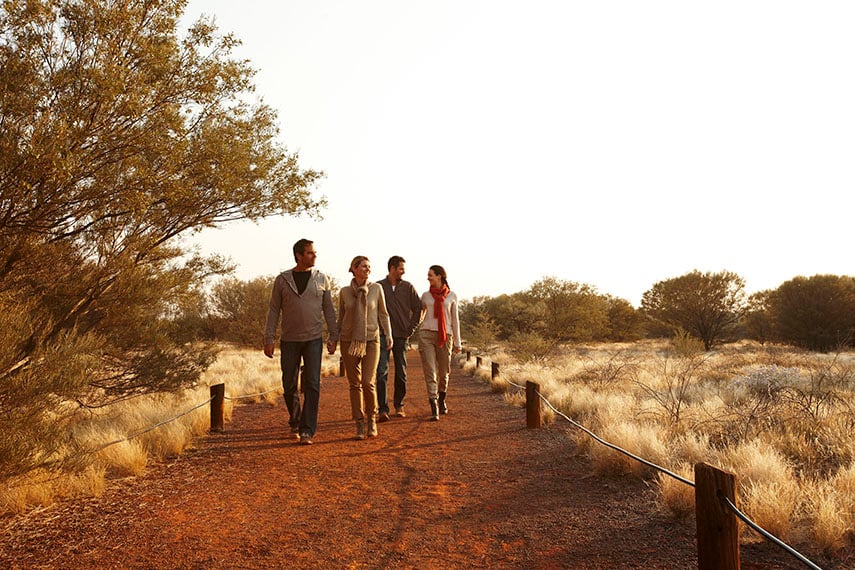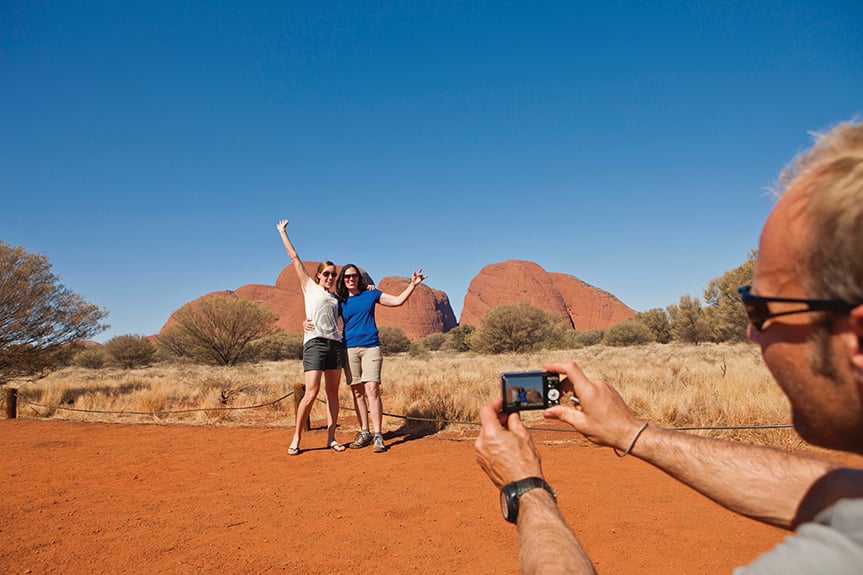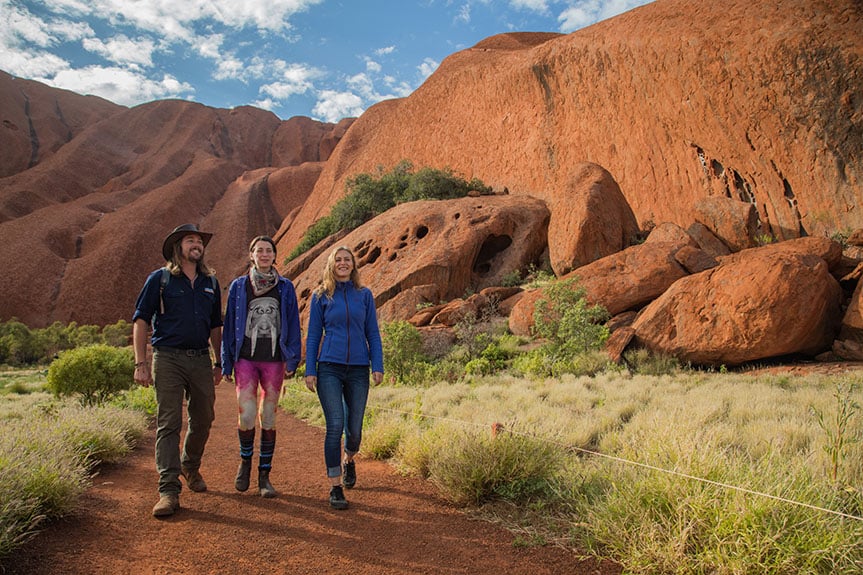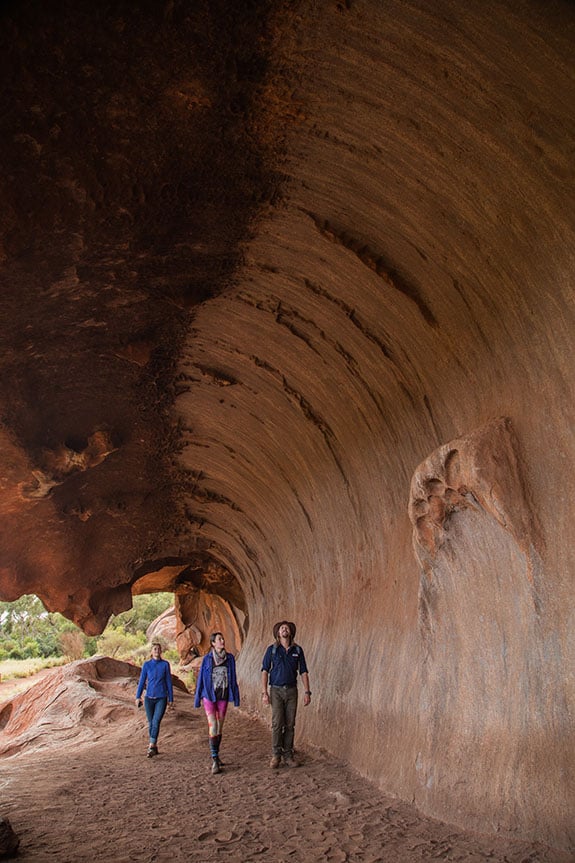Hiking around Uluru and Kata Tjuṯa are fun adventures you’ll want to remember forever, for the right reasons! Here are some common questions about staying safe and making the most of your trek.
How Long Does it Take to Walk Around Uluru?
If you’re wondering how much time to set aside when setting out on the Uluru walking trails, the base walk around Uluru is about 10 kilometres long. Completing the walk takes anywhere from three to three and a half hours.
How Difficult is the Uluru Base Walk?
Because of its length, the Uluru Base Walk is moderately challenging if you are a new hiker. However, completing the entire loop is optional. Beginner hikers can still expect beautiful views from completing smaller sections instead of the loop. Sections of the trek are wheelchair accessible, and it’s a fairly flat course all around.
How Much Water Should I Bring on my Uluru and Kata Tjuṯa Hikes?
Carry and drink one litre of water per person per hour to avoid dehydration. Consider using an electrolyte product to replenish lost fluids if you’re sweating a lot or embarking on an extra-long hike, but caffeinated drinks or sports drinks can be dehydrating and shouldn’t be used in place of water.
How Can I Keep My Energy Up While Hiking Uluru and Kata Tjuṯa?
Most importantly, don’t overdo it: Take lots of breaks, go slower than you think you need to, and don’t wait until you’re hungry to eat something. A hike is not a race, so take your time and enjoy the outing to avoid overexerting yourself.
Can I Explore Off the Trail?
Obey signage: Please stay on marked trails. Not only does this keep you safe, it’s also crucial for protecting the delicate desert ecosystem and respecting Anangu beliefs around the sacred areas of Uluru and Kata Tjuta. Heed all signage and notices, including instructions provided by park rangers.
Can I Walk Around Uluru and Kata Tjuṯa By Myself?
Bring a buddy: Don’t hike alone. Make sure that you bring a hiking partner with you and let someone else know where you’re going and when you expect to return.
What Should I Do if I See an Animal on My Hike?
Give animals space: The Outback is home to plenty of creatures great and small. You’ll want to keep an eye out for the king brown snake, a large, venomous snake that can reach lengths of up to three metres. Generally, it will only bite if it’s disturbed. If you see any snakes in the desert, keep your distance.
The dingo is a wild animal that’s part of the dog family. They’re shy of humans and prefer to prey on small desert animals, but they may watch people from a distance. While they may look cute, they’re wild animals and shouldn’t be approached by humans.








